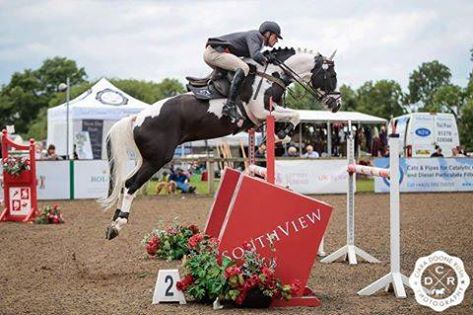Choosing A Stallion
Once you’ve made the decision to breed your mare, choosing the right stallion is next on the agenda, There has never been greater choice of stallions when looking for the ideal mate for your brood mare. With so many things to consider, it is important to have a clear aim of what you are trying to breed, for what purpose and try to choose the stallion most suited to your mare, to produce the best offspring possible.reeding can be an expensive and long term proposition, it is important to consider why you are doing it and what you hope to achieve and whether you have the appropriate facilities for mares, foals and youngstock.
The increasing use of artificial insemination (AI) with either chilled or frozen semen does make more stallions available and gives the option of using stallions who are a long distance away, abroad or even dead.
However, while there are, undoubtedly, advantages to AI, it can prove to be more expensive and less successful than natural service.
Whatever his breed or type, a stallion should always have correct conformation and movement, with no hereditary unsoundness. If a pure breed, for example, Welsh Section B or Connemara, he should have the breed characteristics and be true to type.
Choosing a stallion to compensate the mare`s faults and vice versa, does not always work. Unfortunately, a foal can inherit the worst faults of both parents, but it is still a good idea to try to choose a stallion who should improve a mare`s weak points.
For example, if your mare is long in the back, choose a short-coupled stallion. Try to see some of a stallion`s progeny to determine if he passes his characteristics to his offspring.
Some stallions really stamp their stock and are renowned for passing on a particular trait, for example, a good front or extravagant movement.
Ideally, a stallion should have a good performance record, if he has competed. However, do not dismiss a stallion, you like the look of, who has not competed, as there may be good reason for this. A stallion should have a strong pedigree, which is recognisable and relevant to the market you are aiming for. Although, you may not, initially, be breeding to sell, at some point you may want to and the pedigree is one of the first things a buyer will ask about. Using a well-established stallion, with proven progeny, can help give some reassurance that he does produce successful, trainable stock and may make your foal more marketable. However, such a stallion likely to command a higher stud fee.
Do not be afraid to use an up and coming stallion, providing you are satisfied with his conformation, movement, temperament and his own performance record, particularly if you are not looking to sell your foal early in life.
People need to look hard at their mares and recognise their faults. A stallion can improve some of these, but not put everything right. It is important to find a stallion which suits your mare and not just use one which is fashionable, as many people do.
When you have narrowed your choice down to a few stallions, try to see them in the flesh, if at all possible. Photographs can be deceptive and it will also give you the opportunity to assess their temperament. However, beautiful a stallion, if he has a difficult nature, there is always the chance that he will pass it on to his stock.
Enquire about the stallion`s fertility – what percentage of mares covered the previous seasons were in foal? Whatever, the reputation of the stallion, if he is not currently getting mares in foal, because of poor fertility or bad management, then he is not a good breeding prospect for you. Visiting the stud will also give you the opportunity to see the facilities available and meet the people you will be dealing with.
Make sure you are quite clear about terms and conditions. As well as the stud fee, establish the keep charges, any additional costs and the terms of payment. This can avoid misunderstandings and disputes at a later stage.
Some bigger studs offer an optional veterinary scheme, whereby you pay a ‘one-off` fixed fee, which covers routine veterinary work necessary to get the mare in foal and monitor early pregnancy, but make sure you know if there are any treatments not included in this scheme. Otherwise, clarify the veterinary procedures the stud usually takes and their costs. All this will help you budget more accurately.
Using an inferior stallion because his stud fee is cheap and he stands just down the road is false economy. Breeding horses can be an expensive and unreliable business, but it can also be extremely enjoyable and satisfying. Choose your mare and the stallion carefully and for all the right reasons.
Advantages and Disadvantages of Artificial Insemination
- AI offers a wider choice of stallions.- With AI the mare can stay at home, thus saving on keep charges and transport costs. If using frozen semen it may be necessary for her to go to an equine clinic or AI centre.
B
- With AI there are additional costs for the transportation of semen.
- AI usually requires significantly more veterinary input than natural service, especially if using frozen semen, so veterinary costs are higher.
- Although increasing all the time the conception rates for AI are significantly less than with natural service.
- Sometimes with AI there is no live foal guarantee offered, so check your contract carefully. If you do not get your mare in foal the money is lost.



